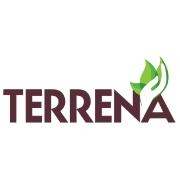


Location
France

Activity area
Pharma & Biotech
The IT Office as a Transformation Powerhouse
Terrena is the leading multi-purpose agricultural cooperative in France. It has experienced significant growth over the past years, with its annual revenue jumping from 3 to 5 billion euros over the last decade. The cooperative has engaged in a fast-paced transformation initiative in a bid to stay ahead of the competition and blaze new trails in food and agricultural innovation. Its far-reaching “New Agriculture” strategic program lays out an agenda to disrupt operations and activities in order to produce more, and better.
“The IT Office is the key enabler in implementing this strategy. We are needed to support a wide array of transformational projects across the Group, and we must work at full efficiency to make sure that Terrena leads the market and breaks new ground – for example, connected agriculture”, said Christophe Evers, the PMO Manager of Terrena’s Group IT Office.
- Location: France
- Industry: Food & Beverages
Sciforma is enhancing the management of IT projects and portfolios, enabling Terrena to achieve its strategic transformation vision.
Christophe Evers
PMO
Centralizing and Efficiently Monitoring the Applications and Project Portfolios
This Information Services Department was born back in 2010 from the merger of the IT departments of Terrena’s member companies, which now feed all their projects and applications to the consolidated IT Office. Additionally, IT workload has increased as the Group has grown more agile, breaking down long-term strategic roadmaps into clusters of smaller projects that require increasingly specialized resources.
“Our response time needs to be very fast. And we need the ability to assess the strategic value of projects. As our resources are limited, it is essential to assign them to the most relevant projects. A good start is to eliminate waste and to avoid having different teams work on the same project!”, said Christophe Evers.
Accordingly, Terrena needed a tool to centralize and effectively monitor its project and application portfolio, as well as the related resources.
A Smooth Set Up
Process Optimization
The IT Office used to work with a range of project and portfolio management softwares. It then migrated to Sciforma 4 in 2012 – a first step toward process optimization. “Sciforma is designed and scaled to address our complex model. But version 4 was hosted on local servers, with heavy interfaces. Note that, here at Terrena, we are not cloud-oriented at all”, said the PMO.A Move to the Cloud
A Move to the Cloud
However, Terrena did go for the SaaS option when upgrading to Sciforma 7 in 2016. Christophe Evers and his teams wanted to incorporate into the tool all the processes that had been defined since 2012, with a focus on budget management. In order to ease the transition for users, they devised a gradual implementation plan, rolling out one new feature per month. “Reinstalling the tool with each new rollout was not an option. Hence the appeal of Saas.“
Successful Change Management
Change management was a key priority in the context of the migration to Sciforma 7. Users had to be gradually transitioned from a heavy-client system to a full web-based one. “This had to be gradual, but swift, as we were entering a time of turbulence in our transformation journey. With support from Sciforma and their partner ASI, we developed learning resources to help boost project manager maturity: tutorials, workshops, quizzes, etc. It might sound silly, but creating a specific home page to introduce shortcuts has been instrumental in user adoption. In fact, adaptability is one of Sciforma’s strong points compared with other tools”.
“Mission accomplished: in a matter of months, the bulk of the teams were naturally using Sciforma“
Sciforma 7.1 is so remarkably intuitive that even I was surprised. The interface is completely foolproof, as demonstrated in the first trainings. Even the project managers who are known to be somewhat change-averse got on board right away. With this version, I don’t believe we will need a huge change management effort!
Christophe Evers
PMO
Sciforma 7.1: Impressively Easy to Use
Easier Project Tracking and Budget Management
Adopting Sciforma was easy with its strong project tracking capabilities. “We all share the right information, at the right time!”, as Christophe Evers put it. This allowed them to develop KPIs to measure project value and time to market, and to further refine and improve portfolio management. Integrating budget management processes into the tool has especially saved invaluable time. The IT Office relies on a charge-back scheme to bill cooperative members for the work done on their projects. With so many internal clients to manage, time-tracking had become quite tedious. Automating this into Sciforma made it possible to reduce the time spent on time-sheet management twentyfold!
Better Project Management and Control
The Financial Control department also benefits from the tool, which provides granular tracking of the time inputted by external contractors, along with the associated rates. This made it easy to forecast and anticipate outbound cash flow, whatever the delay between invoicing and delivery. “As a matter of fact, Sciforma is one of the only tools that Financial Control managers trust when making supplier-related provisions”, according to the PMO manager.
Formalizing the Innovation Process
Altogether, Sciforma was made available to three populations: the IT Office, the Audit department, and the Board. The IT Office keeps leveling up on its use of the tool, which is evolving into a control tower for all new processes and methods designed to optimize key resource allocation. Sciforma is also used to formalize the innovation process, which is increasingly important for Terrena: “As proof of concept is gaining traction within the Group, we need to start incorporating it into Sciforma in order to track and prioritize”, he said.






